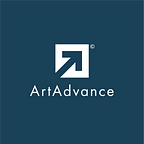Is crypto really eating art up?
So is it?
The scarcity of today’s world is attention, and attention is increasingly focused on art in the digital realm. For those unfamiliar with the blockchain technology ecosystem, I recommend glancing at this article or simply checking out Youtube, as you will increasingly often encounter various pretentious terms such as crypto art, NFT, metaverse, DAO and Web3.
At the Non-Fungible conference in Lisbon, held in early April 2022, the message was clear: NFT art is booming. Each successful NFT project has transparrency, shared decision making power, community, fun and games to offer. The founders and initiators of the individual projects are committed to social causes. Artists are increasingly interested in shifting their creative processes onto the digital realm. Tech early adapters are all-in exploring this artistic alteraltion that is finally happening within their comfort zone.
As we watch expositions of NFT art popping up at every recent art fair, academics and critics shower us with opinions that can be truly confusing to digest. So, fearlessly we ask — is NFT art replacing physical art?
Seems that crypto art players do not regard themselves as the dominant force. If anything, they consider themselves a coexisting and evolving continuation of the ecosystem. Why do we separate the crypto art/NFT art/NFT/digital art from… art? On some level, this separation has been taking place since Duchamp: The Dada movement caused so much commotion and resistance that people attempted to come to terms with a pisuar presented as high art and began to fundamentally separate The art from That art. Today, we may be doing exactly the same thing. Fanny Lacoubay, one of the organizers of the Non Fungible Conference, points out that NFT art is really an evolution of art as we know it, and introduces the category of “Ultra-Contemporary.”
What is Ultra Contemporary art?
A consensus on art categories is in general difficult to reach. According to the Artnews, Ultra Contemporary "strictly applies to artists born from 1975 to the present day, as a way to bring valuable visibility to the youngest talents with strengthening secondary markets.". That is the tip of the avant-garde iceberg, the still niche and yet to be explored. The category overarches the artists who aren't established in the global art world and have something novel to offer. What the NFT art movement is, also seems to fall under the definition of the Ultra Contemporary.
There’s also a Post-Contemporary (PoCo) movement going on right now. I can explain the differences between these movements next time, but the key distinction lies in the intent of the prefixes “ultra” and “post”. “Ultra” doesn’t contradict or retire the contemporary — by definition, ultra means an extreme version of something.
The answer is no, crypto art is not eating the physical art up. There’s a saying as old as time along the lines of: “Art reflects society.” Although I disagree with it in a way, it seems to prove itself, as right now society feels the need to exist in the digital realm almost as much as in the physical one.
Kotryna Tribusinaite, 2022
©artadvance
